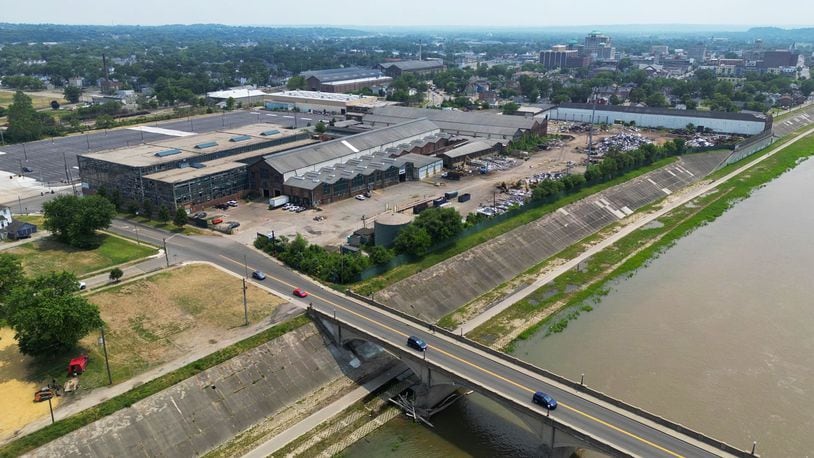Two of the company’s executives, Hunter and Matt Starr, executive vice president of commercial real estate and leasing, talked about the project ahead of City Council’s first reading of a proposed development agreement that would provide Crawford Hoying a $3 million loan, which can be converted into a forgivable loan if certain performance thresholds are met.
Crawford Hoying has plans, once it takes ownership in 18 months, to turn the 17.7-acre Cohen Recycling plant into a $150 million-minimum mixed-used development that features retail, housing and a hotel. Phase 1 of the three-phase overhaul calls for a 120-room hotel, 176 apartments, six townhomes, and 5,000 square feet of retail space.
Council’s expected July approval of the development agreement would allow Crawford Hoying to close on the property later this summer, and site and development work could start in the fall of 2024, and the opening of the first phase in 2026. Within 30 days after closing, Cohen would have to consolidate to one portion of the site.
Eventually, Cohen will relocate its operations to a smaller site north on North Third Street.
Hamilton’s development agreement with Crawford Hoying calls for each of the three phases to have a minimum of $50 million of development. Phase 1 is to be finished by December 2026, though Starr said it’s expected to be several months before then. The second phase and second $50 million increment must be completed by 2031, and the last phase and $50 million increment must be done by 2036.
If they meet the investment minimums and incremental thresholds, then the $3 million loan would be converted into a grant, and the city would repay itself through tax increment financing associated with the project, per the development agreement. If any threshold is missed, then the developer would have to repay a prorated portion of the loan.
Historically, Crawford Hoying has exceeding investment expectations. The developer’s signature project, Bridge Park in Dublin, had a minimum investment of $200 million. The company had quadrupled that amount with more than $800 million of development.
Starr said they’re “at the starting block” for the project and admitted that while the activities in Hamilton drew the developer to the city, Spooky Nook “put this opportunity over the top for us.”
”We just hope the Cohen site is just the start,” Starr said. “Good growth happens organically; we cannot force it. We’re in a challenging market today, but if we do what we do right, it should just grow and radiate.”
Crawford Hoying has worked on a number of big projects, including its marquee development at Dublin’s Bridge Park, as well as Dayton’s Water Street District and Cincinnati’s The Banks.
Credit: Tom Gilliam
Credit: Tom Gilliam
Compared to the company’s Dayton developments, it started with new buildings, and that’s what Hunter said is expected to start in Hamilton. Hunter said they plan to leave the older buildings on the site in place for future development opportunities.
“They’re beautiful buildings,” he said. “They can’t be replaced if they’re torn down. And the market might not be there for them today, but it won’t mean it won’t be there for them in three, five, seven years. There’s a lot of acreage under those roofs and it’s too much for anyone to buy it today.”
Hunter and Starr said based on their experience, they have to get people to the site before further interest comes.
Though Russell addressed a question from City Council on how the Great Miami River can be utilized by the development, he said “the sky’s the limit” both on river utilization and the project itself.
“We’re here to collaborate,” he said. “We want to be a part of the team.”
About the Author
